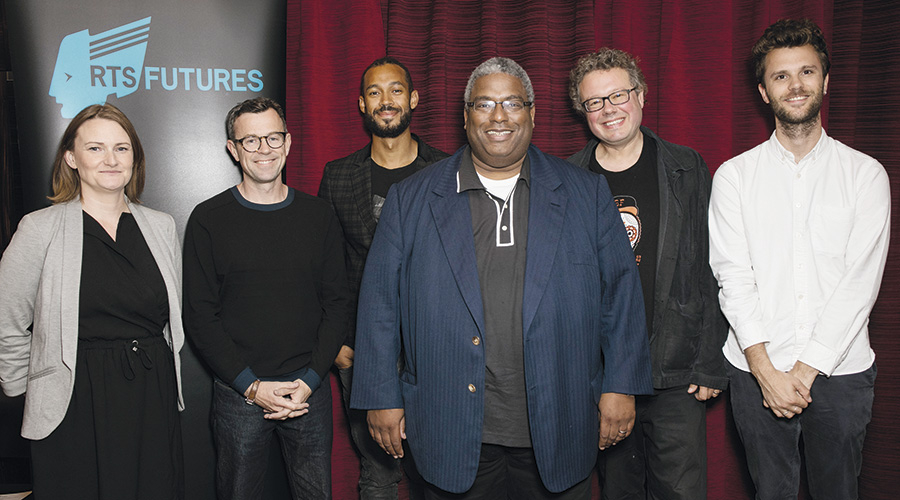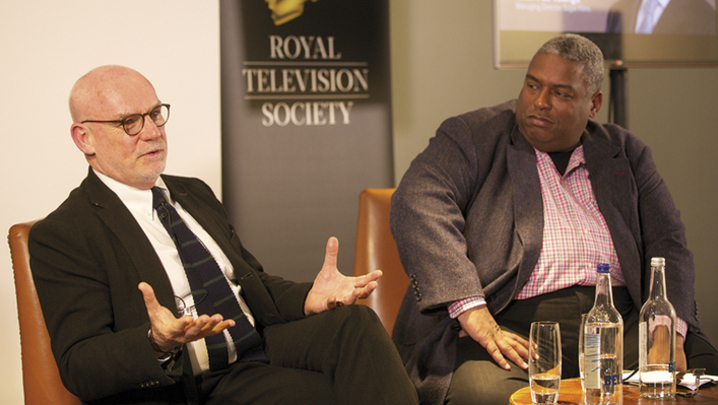Short-form video is booming – the challenge is getting your content noticed, says Steve Clarke
Short-form online content is booming. YouTube depends on it. Channel 4 and BBC Three are showcasing short films unsuited to conventional linear-TV schedules. Brands, wary of ad blocking, are in the market for short-form content, too.
These were some of the conclusions of a wide-ranging and packed RTS Futures panel discussion, “Size matters: A provocative look at short-form content”. The session was chaired with erudition and flair by Pat Younge, co-founder and Managing Director of Sugar Films.
For wannabe film-makers immersed in digital culture, there was positive news from the experts. “What’s new at BBC Three is short-form. We see that as a massive opportunity to work with new talent,” said BBC Three content editor Max Gogarty.
“Since we launched in February, we’ve tried out some 10 new, on-screen faces.… Our door has never been more open for both on-screen and off-screen talent.”
Adam Gee, multi-platform and online video commissioning editor at Channel 4, also offered encouragement to the Futures audience.
“The commissioning editors have very direct relationships with all sorts of people, not necessarily people who are massively experienced. They’re very easy to find,” he said. “I spend a lot of time going out to find film-makers all around the UK and beyond, and to develop relationships with them.
“Different commissioners have different balances. My colleague who covers entertainment and comedy tends to work more with traditional indies.
“I hardly work with traditional indies at all. I work with weird and wonderful talent, fresh talent that’s emerging.”
Gee pointed out that, due of the glut of online short films, it was important to consider carefully how audiences discover and watch online content.
“From the beginning of the development process, we think about how we’re going to sell them,” he said. “Think about a title that works on the platform. Think about what kind of imagery will represent the series. On all platforms, most of the audience switches off in the first 15 to 20 seconds. You’ve got to hook people in.
"There is no formula for getting video to go viral... Sometimes the thing you really believed in doesn't take off."
“The statistic that I am most proud of is our completed viewing rate for the short-form video that I’ve been commissioning over the past two years. It is above 90%. On YouTube, it is south of 25%.”
Randel Bryan, director of content and strategy at Endemol Shine’s Beyond UK, agreed that aspiring film-makers needed to work out how audiences would locate the videos they’ve produced.
“You are much more than a film-maker now. You have to be a one-stop shop. You need to understand how to market, how to use social media to get people to find you,” he said.
Andy Taylor, CEO of digital specialist Little Dot Studios, revealed that much of his staff’s time is spent persuading websites to embed clients’ videos.
“The biggest challenge is getting your content seen. Something like 400 hours of content is uploaded to YouTube every minute,” he said. “People expect celebs such as Gordon Ramsay and Graham Norton to get millions of views. It’s not so.
“You’ve got to get yourself into the head of the person who is going to find that piece of content. For an entertainment show, it is all about embedding.”
For factual content, such as recipes or parenting advice, Little Dot’s job is to slowly build up the numbers via social media and to get people to share the content.
The majority of all short-form video is consumed on mobile and aimed at digital-savvy millennials.
The newbies were shown a selection of short-form content. This demonstrated the variety of content available at the swipe of a screen. The range encompassed sombre material such
as BBC Three’s Drugs Map of Britain and comedy items such as Maker Studios’ James Bond parody in the Epic Rap Battles of History strand. There was also the brilliant Nude in Newington Green from All 4’s Naked & Invisible series.
“At BBC Three, we’re no longer wedded to a linear-TV schedule, which is massively exciting,” stressed Gogarty. “We don’t have to fill an hour or a half-hour [in the schedule]. It’s hugely liberating for producers. I’ve spoken to a lot of directors who’ve been working for BBC Three for a long time. [In the past] They’ve told me that they can’t cut down a film to the required length, but now I say, ‘That’s absolutely fine’.”
At Channel 4, Gee’s commissions include Drones in Forbidden Zones, The Black Lesbian Handbook, Oh Shit I’m 30! and the previously mentioned Naked & Invisible.
He said: “I think we’ve helped refine a certain kind of film-making and found an audience for it.… I love making it. It makes regular TV extremely difficult to watch afterwards, because it’s so flabby.”
Kelly Sweeney started out in conventional TV production. In 2007, she was employed by social network Bebo. There, she worked on its ground-breaking drama Kate Modern. She is now director of production at Disney-owned Maker Studios.
Younge asked her whether working in a more corporate environment was reining in her creativity. “If anything, it has enabled it,” she replied. “We have a fund to create our own IP, so we can create content for our channels without someone having to commission it. That is the direct result of being part of a big organisation.”
What were the most common mistakes people made when they approached producers with their content, Young asked the panel.
With 2,000 people applying to Maker each day, Sweeney said that wannabes needed to show that their videos were achieving at least 1,000 subscribers.
“Avoid copycatting,” she recommended. “The model is still very new. There isn’t that tried-and-tested way of going for it.”
Gogarty advised potential BBC Three short-film makers to familiarise themselves with the network.
“The most common mistake,” he said, “is being ignorant of what we’re about and where BBC Three is heading, and not following us on social platforms. If you genuinely want to make content in this space, the best thing to do is to know what we’re commissioning, what we’re making and the tone of voice.”
However brilliant your film is, don’t expect 5 million views overnight, warned Bryan. He stressed the importance of knowing the correct way to market content.
But where do newbies learn this skill, asked Younge. “There is a YouTube playbook, which is a great start,” replied the Endemol executive.
As for the type of content that attracts eyeballs, Gee suggested avoiding “stuff that’s too quiet” and “too talkie”. He added: “It’s a very noisy world out there. It’s better to see material that is driven by action and actuality.”
What about quality? probed Younge. Would it matter if the microphone was in shot or if it was framed properly?
“All creatives are not made equal,” said Sweeney. “A lot of people in the UK are making really beautiful films.
“In South-east Asia, we see a big trend towards writers, comedians and satirists. Young people don’t have a platform for self-expression in Singapore due to government censorship. They use YouTube for self-expression.”
At the end of the 90-minute session, Younge offered some advice to the Futures audience: “I think a common theme has emerged this evening. It is: go and do it. Find a way of making it happen, even if it’s only a scene. It’s a great way to show that you can write, act or direct.”
‘Size matters: A provocative look at short-form content’ was an RTS Futures event held at The Hospital Club in London on 4 July. The producer was Danielle Lauren, a producer at Sugar Films.







